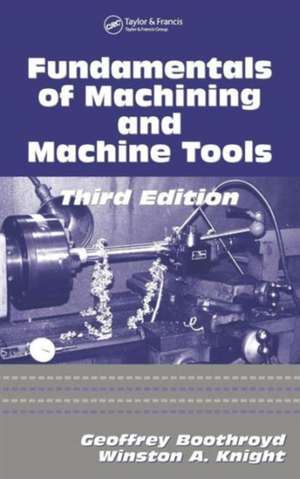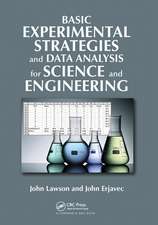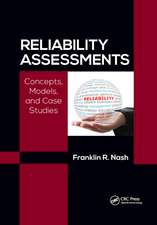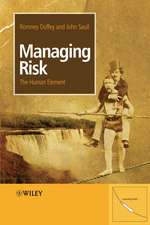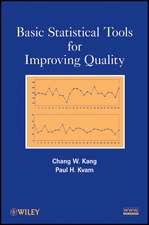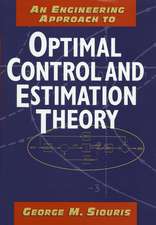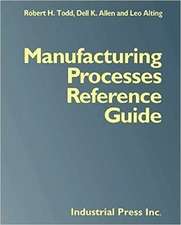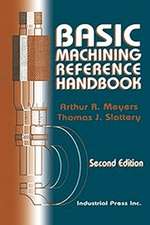Fundamentals of Metal Machining and Machine Tools
Autor Winston A. Knight, Geoffrey Boothroyden Limba Engleză Hardback – noi 2005
Preț: 1019.99 lei
Preț vechi: 1243.89 lei
-18% Recomandat Nou
195.21€ • 203.26$ • 164.97£
Carte tipărită la comandă
Livrare economică 10-24 martie
Specificații
ISBN-10: 1574446592
Pagini: 602
Ilustrații: 321 black & white illustrations, 70 black & white tables
Dimensiuni: 152 x 229 x 37 mm
Greutate: 1.02 kg
Ediția:Revizuită
Editura: CRC Press
Colecția CRC Press
Public țintă
UndergraduateCuprins
CONVENTIONS USED IN THIS BOOK
Standardization
Introduction to the International (SI) System of Units
MACHINE TOOLS AND MACHINING OPERATIONS
Introduction
Generating Motions of Machine Tools
Machines Using Single-Point Tools
Machines Using Multipoint Tools
Machines Using Abrasive Wheels
Summary of Machine Tool Characteristics and Machining Equations
Problems
References
MECHANICS OF METAL CUTTING
Introduction
Terms and Definitions
Chip Formation
The Forces Acting on the Cutting Tool and Their Measurement
Specific Cutting Energy
Plowing Force and the "Size Effect"
The Apparent Mean Shear Strength of the Work Material
Chip Thickness
Friction in Metal Cutting
Analytical Modeling of Machining Operations
Problems
References
TEMPERATURES IN METAL CUTTING
Heat Generation in Metal Cutting
Heat Transfer in a Moving Material
Temperature Distribution in Metal Cutting
The Measurement of Cutting Temperatures
Problems
References
TOOL LIFE AND TOOL MATERIALS
Introduction
Progressive Tool Wear
Forms of Wear in Metal Cutting
The Tool Material
Tool Geometries
The Work Material
High Speed Machining
Hard Machining
Problems
References
CUTTING FLUIDS AND SURFACE ROUGHNESS
Cutting Fluids
The Action of Coolants
The Action of Lubricants
Application of Cutting Fluids
Cutting Fluid Maintenance
Environmental Considerations
Disposal of Cutting Fluids
Dry Cutting and Minimum Quantity Lubrication
Surface Roughness
Tool Geometries for Improved Surface Finish
Burr Formation in Machining
Problems
References
ECONOMICS OF METAL-CUTTING OPERATIONS
Introduction
Choice of Feed
Choice of Cutting Speed
Tool Life for Minimum Cost and Minimum Production Time
Estimation of Factors Needed to Determine Optimum Conditions
Example of a Constant-Cutting-Speed Operation
Machining at Maximum Efficiency
Facing Operations
Operations with Interrupted Cuts
Economics of Various Tool Materials and Tool Designs
Machinability Data Systems
Limitations of Available Machinability Data
Problems
References
NOMENCLATURE OF CUTTING TOOLS
Introduction
Systems of Cutting-Tool Nomenclature
International Standard
Problems
References
CHIP CONTROL
Introduction
Chip Breakers
Prediction of Radius of Chip Curvature
Prediction of Chip Breaking Performance
Tool Wear During Chip Breaking
Problems
References
MACHINE TOOL VIBRATIONS
Introduction
Forced Vibrations
Self-Excited Vibrations (Chatter)
Determination of Frequency Response Loci
Dynamic Acceptance Tests for Machine Tools
Improving Machine Tool Stability
Problems
References
GRINDING
Introduction
The Grinding Wheel
Effect of Grinding Conditions on Wheel Behavior
Determination of the Density of Active Grains
Testing of Grinding Wheels
Dressing and Truing of Grinding Wheels
Analysis of the Grinding Process
Thermal Effects in Grinding
Cutting Fluids in Grinding
Grinding-Wheel Wear
Nonconventional Grinding Operations
Problems
References
MANUFACTURING SYSTEMS AND AUTOMATION
Introduction
Types of Production
Types of Facilities Layout
Types of Automation
Transfer Machines
Automatic Machines
Numerically Controlled (NC) Machine Tools
Comparison of the Economics of Various Automation Systems
Handling of Components in Batch Production
Flexible Manufacturing Systems
Problems
References
COMPUTER-AIDED MANUFACTURING
Introduction
Scope of CAD/CAM
Process-Planning Tasks
Computer-Aided Process Planning
Processing of NC Programs
Computer-Aided NC Processing
Numerical Control Processing Languages
NC Programming Using APT-Based Languages
Graphics-Based NC Processing Systems
References
DESIGN FOR MACHINING
Introduction
Standardization
Choice of Work Material
Shape of Work Material
Shape of Component
Assembly of Components
Accuracy and Surface Finish
Summary of Design Guidelines
Cost Estimating for Machined Components
Problems
References
NONCONVENTIONAL MACHINING PROCESSES
Introduction
Range of Nonconventional Machining Processes
Ultrasonic Machining
Water-Jet Machining
Abrasive-Jet Machining
Chemical Machining
Electrochemical Machining
Electrolytic Grinding
Electrical-Discharge Machining
Wire Electrical-Discharge Machining
Laser-Beam Machining
Electron-Beam Machining
Plasma-Arc Cutting
Comparative Performance of Cutting Processes
Problems
References
NOMENCLATURE
INDEX
Notă biografică
Descriere
In the more than 15 years since the second edition of Fundamentals of Machining and Machine Tools was published, the industry has seen many changes. Students must keep up with developments in analytical modeling of machining processes, modern cutting tool materials, and how these changes affect the economics of machining. With coverage reflecting state-of-the-art industry practice, Fundamentals of Machining and Machine Tools, Third Edition emphasizes underlying concepts, analytical methods, and economic considerations, requiring only basic mathematics and physics.
This book thoroughly illustrates the causes of various phenomena and their effects on machining practice. The authors include several descriptions of modern analytical methods, outlining the strengths and weaknesses of the various modeling approaches.
What's New in the Third Edition?
- Recent advances in super-hard cutting tool materials, tool geometries, and surface coatings
- Advances in high-speed machining and hard machining
- New trends in cutting fluid applications, including dry and minimum-quantity lubrication machining
- New developments in tool geometries for chip breaking and chip control
- Improvements in cost modeling of machining processes, including application to grinding processes
Supplying abundant examples, illustrations, and homework problems, Fundamentals of Machining and Machine Tools, Third Edition is an ideal textbook for senior undergraduate and graduate students studying metal cutting, machining, machine tool technology, machining applications, and manufacturing processes.
